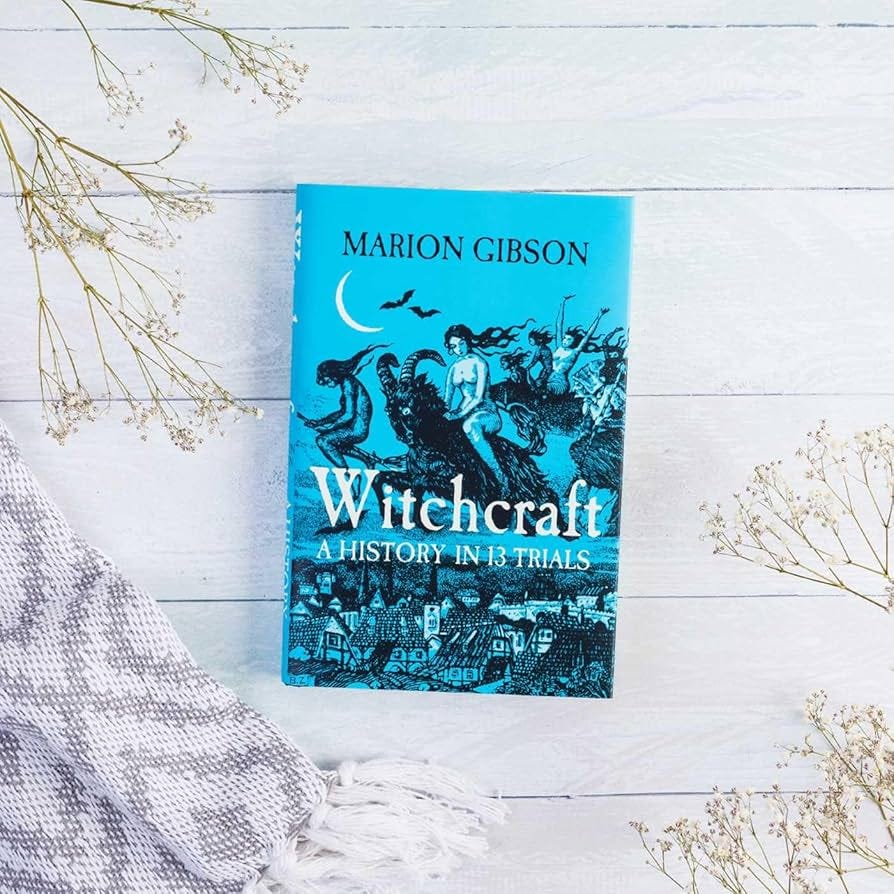You’d think that after spending three years researching the depiction of magicians in early modern theatre, the last thing I’d want to read when I finally handed in my corrections was more about early modern magic, but top of my ‘to read’ pile was Marion Gibson’s Witchcraft: A History in 13 Trials. I really enjoyed it and recommend it to anyone with an interest in the topic whether you’re a newcomer or an expert.
It’s a book that does what it says on the tin and takes us through a well-selected chronology of witch trials across centuries and continents, from medieval Austria to modern America. I was sceptical at a first glance about the inclusion of Stormy Daniels, but I had completely missed the fact that she actually identifies as a ‘witch’ in a modern pagan sense and that this fact was used in the campaign to discredit her accusations against Donald Trump.
One thing I particularly enjoyed about the book was the interesting balance it struck between appealing to both head and heart. Gibson manages to make the reader feel deeply for the victims of witch-hunting without compromising on the quality of evidence. This isn’t a storybook and it doesn’t read like a subjective opinion piece, but time is given to the emotional reality of the lives described. This book captures better than most histories I’ve read what it would have been like to have lived through a witch trial.
I am certainly guilty of indulging in titillating trivialisation of the horror of the witch trial era, gleefully hoovering up campy retellings like Witchfinder General (1968) which revel in the nastiness because it’s fascinating and macabre.
It’s important to be reminded that these were real women and men, and I came away from the book feeling only the deep tragedy of these unnecessary deaths. One passage that particularly struck me comes from Chapter 5, which describes the mid-seventeenth century trial of Bess Clarke, a disabled woman, who was unlucky enough to cross paths with the self-styled ‘Witchfinder General’ Matthew Hopkins. Bess was not the only person to face execution on her allotted day:
The women had to queue to be killed, and during the wait Margaret Moone died of fear, perhaps suffering a heart attack or stroke. Her co-accused clustered round weeping, unable to help her as she died, but the executioner smoothly continued his professional duties. He must have paused when he came to Bess, to consider how to hang a one-legged person. She could not use the ladder that led to the noose. Condemned people were expected to climb the rungs and stand still until they were pushed — ‘turned off’ as it was called — by the hangman. But Bess could not reach the rope and gain the necessary height for the drop that would kill her, eventually, by breaking her neck or strangling her. Her killer must have helped her, perhaps with other men who held her until she was correctly positioned to fall into space. After Bess had died, she was likely buried among the prehistoric barrows under bleached summer grass.
And so a group of women were executed for crimes it is impossible to commit, to which they confessed under torture. When we’re telling stories about witches, let’s not forget the reality of dangerous misogyny and religious paranoia.
Subscribe for more articles on a range of subjects relating to magic, theatre, special effects and more. I publish my ‘horror moments’ on Thursday mornings, and a wide range of fascinating content like this on Monday afternoons.





You've probably already read it, buy I thoroughly enjoyed "Agnes Bowker's Cat", which is a history of certain women via trial records. Agnes Bowker was trying to escape charges of adultery by claiming the devil appeared and had his way with her, and so she gave birth to a cat. Not her fault, can't blame her for the devil being horny...
I had no idea Stormy Daniels identifies as a witch. If only she had used her powers to change the course of the US election...